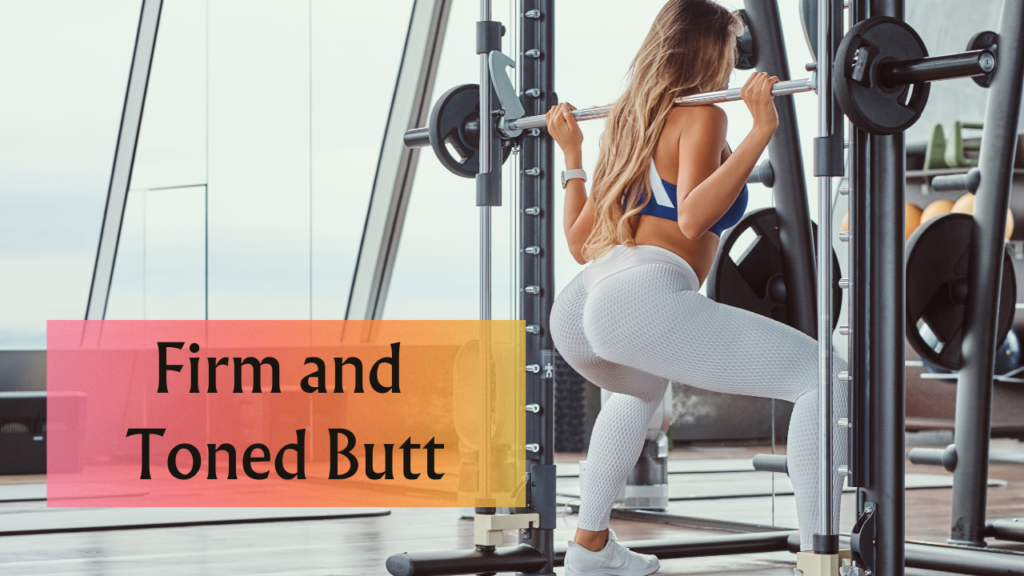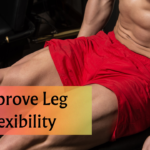The buttocks are among the strongest and largest muscles in the human body. They perform daily laboriously, enabling you to stand, walk, ascend staircases, and carry heavy objects. Not only will strengthening your glutes (yes, there are multiple types) increase your speed and explosiveness, but it will also safeguard your knees and lower back against injury. In addition, practical glute exercises, whether performed at home or in a gym, target the gluteus maximus or gluteus max for short so that the benefits are maximized both during and after the exertion.
Whether your objective is to develop muscle strength or tone your buttocks, these straightforward glute exercises achieve that and more.
What Are The Glute Muscles?
Does the image of the buttrail consist of a single, large, spherical muscle? The glutes, specifically the gluteus medius, gluteus maximus, and gluteus minimus, comprise three distinct muscles.
1. Gluteus maximus: The biggest and strongest tissue in the gluteal group is the gluteus maximus. It is situated posterior to the hip and facilitates hip extension, the motion of the limb in the backward direction. Additionally, it contributes to hip rotation and stability.
2. Gluteus medius: The medius of the gluteus is located outside the hip. It facilitates hip abduction, the motion of separating the limb from the body. Additionally, the gluteus medius aids in pelvic stability while walking or standing.
3. Gluteus minimus: The tiniest of the three gluteal muscles is located beneath the gluteus medius. It aids in hip abduction and rotation and enhances the joint’s stability.
10 Ultimate Glute Workouts For A Firm And Toned Butt
Targeting the glute muscles at home requires no specialized equipment. We have compiled a list of the most effective butt exercises that target the buttocks from every angle to strengthen the posterior region. String together your favorites from the list for an effective butt workout.
1. Glute Bridge
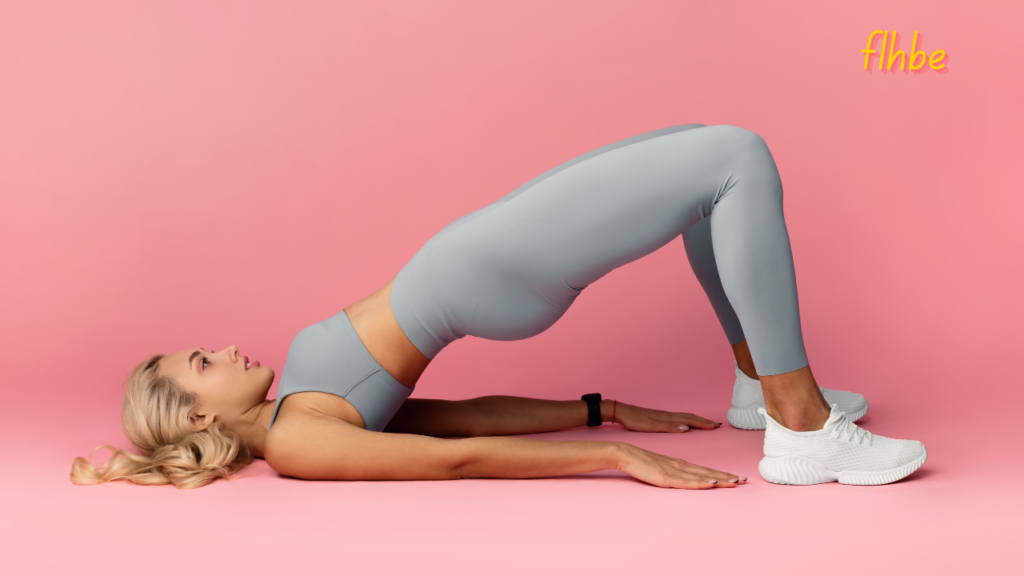
Utilizing the glute bridge before beginning your workout will assist in engaging your glutes. Commence by assuming a prone position on the ground and placing your arms at your sides. When your feet are flat on the ground, flex your ankles. Elevate your back and butt from the ground and into the air by utilizing your glutes.
Ensure that your glutes are thoroughly engaged and that you are not relying on other muscles, such as your legs. Refrain from thoroughly engaging your glutes occurs when you delegate muscle activation to different muscles. Consider how you could elevate your body by squeezing your butt.
2. Swimmers
While in a prone position, extend your legs and limbs to a width equivalent to that of the mat or your shoulders. After contracting your abdominal muscles:
- Raise your left leg and right arm off the ground while contracting your left glute.
- Reverse positions and raise the left leg and right arm off the ground while releasing the right leg and arm.
- Continue rapidly alternating directions for thirty seconds.
3. Squats
Maintain a shoulder-width distance between your feet and point your heels forward. (Remember, as you exercise, to prevent your knees from advancing beyond your heels.) Ensure that your head is not cocked downward and that your thorax remains elevated. To engage your core, draw your navel toward your spine.
While maintaining your heels and toes on the floor and bending your knees, return to a squat position with an elevated torso, retracted shoulders, and contracted abdominal muscles. As you descend, flex your legs until they form an angle of 90 degrees or more. Straighten your legs by applying pressure to your heels to regain your balance. At the peak, contract your buttocks while flexing your pelvis forward. It is repeated.
4. Single-leg glute bridge
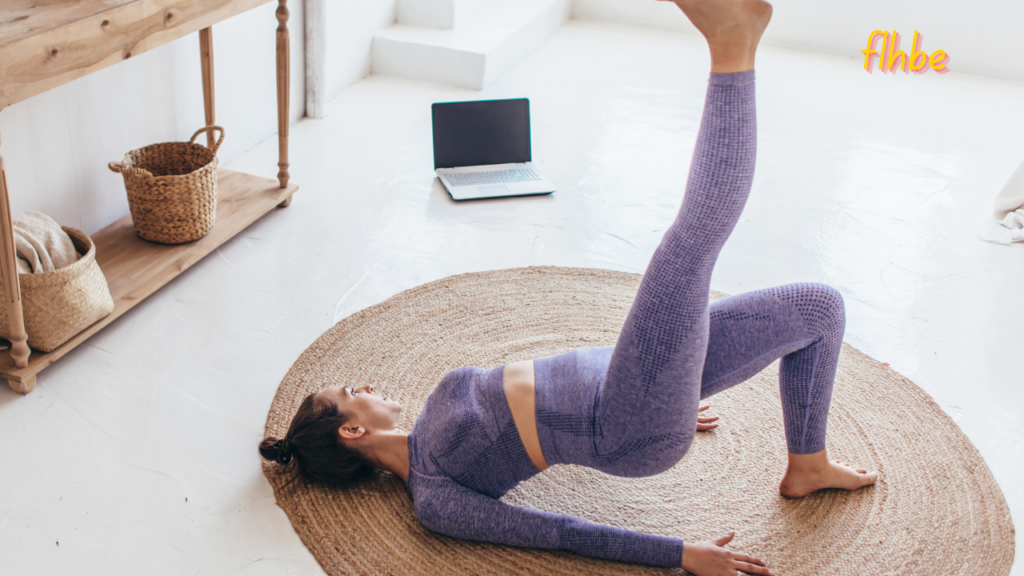
Commence the exercise in the same manner as you would with a conventional glute bridge: lying on your back, knees bent, feet level on the floor in front of you. To begin this variation, maintain a planted left heel while elevating the right leg straight into the air.
Squeeze the left glute and hamstrings while maintaining core engagement and elevating the pelvis. While retaining a raised right leg, gradually lower your pelvis to the floor after repeating alternate sides.
5. Chair squats
Position yourself in front of a chair behind you, with your ankles hip-width apart. Squat gradually by pushing the pelvis backward until your butt touches the chair. Rise to your feet and proceed.
The seated squat continues to engage the lower body musculature effectively. At the same time, the chair provides a safety net for individuals who still need to be entirely at ease with squatting or are in the process of perfecting the form.
6. Crab walk
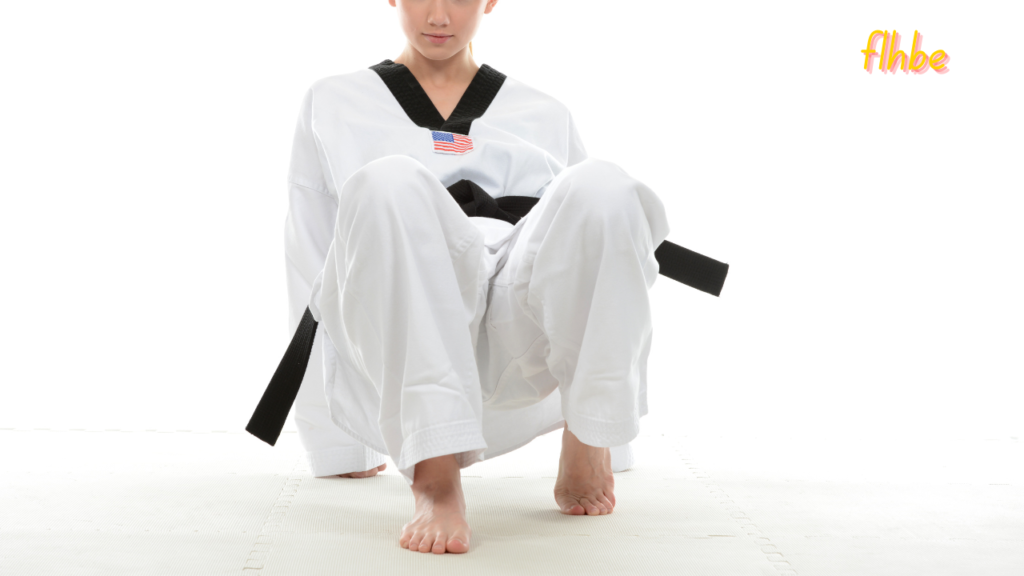
You may utilize a resistance band for this exercise, but you can also complete it using only your body weight! Assume a half-squat position while standing and securing the band around your ankles. After making one step to the right, proceed by stepping with your left foot. Performing a two-step in one direction followed by two steps in the opposite direction while contracting your buttocks completes the sequence.
Not possessing a resistance band does not pose a significant obstacle. You can ensure that you are genuinely contracting your glutes with every step by maintaining awareness. This is an additional effective exercise for rousing the buttocks in preparation for a run or walk.
7. Squat with side leg lift.
This exercise targets the gluteus medius, in particular, after stimulating the buttocks. Performing the side leg elevation also improves your balance in your standing leg. Commence standing with your feet hip-width apart.
Assume a seated position with bent knees and gluteal extension resembling a chair, and while standing, apply downward pressure through the left foot while raising the right leg to a height equivalent to the hip. While lifting, feel the exterior of the proper hip contract. Afterward, return to standing, execute a left-sided leg lift, and repeat the squat. Perform 20 squats, followed by ten leg lifts per side.
8. Clamshell
The specific targeting of the gluteus medius by the clam makes it an ideal exercise to counteract limp butt syndrome—additionally, the clam aids in pelvic stabilization and range of motion. Position yourself on your left side, ensuring your arm or forearm supports your head.
By arranging both knees on top of one another, bend them and draw them closer to your torso. While maintaining the lower limb flat on the ground, extend the other leg upwards by extending the hips. Maintain your feet stuck together at all times.
This motion ought to stimulate the right glute. After ten repetitions, reverse the position to your right side and complete the remaining steps. Again, ensure that no other muscles are being utilized that could facilitate this process. Wrap a resistance band around your quadriceps and squeeze your glutes for additional glute activation.
9. Fire Hydrant
This exercise simulates the clamshell by employing a comparable sequence of motions, thus effectively engaging the gluteus medius. Begin by placing your hands and knees on the ground on all fours.
While maintaining a bowed right knee, extend your right leg laterally away from your body until it reaches a parallel position with the floor. Ten times through, perform this motion on your other limb.
10. Donkey Kick

The glutes are engaged in a backward motion of the thighs during the donkey kick. It would help if you didn’t depend on your quadriceps for assistance during this exercise, as doing so will inhibit the activation of your glutes. Start with all fours. Maintaining a flexed foot, raise your right leg backward until your thigh is in line with your back while your knee remains bowed at a 90-degree angle.
Imagine making a stamp with the sole of your foot on the ceiling. Alternate between lowering and raising your leg in a continuous motion. Ten times through, alternate legs, and repeat.
How To Build A Bigger Butt?
If the objective is to increase the size of the glutes, Weissman identifies three indispensable exercises for this purpose: squats, hip thrusts, and Romanian deadlifts. “We wish to prioritize [these three exercises] to increase glute strength because we can load the most into them,” she explains.
Weissman states that the hip thrust is one of the few exercises in which the glutes can be loaded substantially in the shortened position (when contracted or squeezed). “The primary focus of this exercise is on the middle glute max and a small portion of the gluteus medius, particularly when external rotation is incorporated (hips extended, feet pointed, heels in, and toes out).”
Weissman explains that Romanian deadlifts are an additional glute-maximizing exercise because they are a hip-dominant exercise that targets the gluteus maximus and medius. “Unlike the hip thrust, this exercise primarily targets the lower portion of the glutes and engages them in the extended position during stretching.”
Weissman concludes that the squat is an additional excellent compound lift for loading the lower glute max in the extended position as the body enters the end range, which is the deep portion of the squat. “By bending the knees to achieve depth while pushing the hips back into flexion and allowing the torso to fold slightly, you will load more of those booty fibers.”
The Benefits Of Training Your Glutes
As we have discussed, your glutes are a significant engine for athleticism and strength. Additionally, they are an aesthetic focal point for many individuals; larger quadriceps are a considerable attraction. Still, ignoring your quadriceps does have a significant drawback. You should maintain muscle contraction; otherwise, you risk developing a condition that could “kill” your butt.
Although gluteal amnesia, colloquially referred to as “dead butt syndrome,” may appear to be a lighthearted complication, it is a severe condition that affects individuals who recline for extended periods without engaging their intended muscle groups. Muscle contraction, or firing, can result in posture issues, alterations in walking gait, and discomfort in the lower back and knees (possibly even injury as the remaining lower body parts adapt).
This ultimate glute exercise is intended to improve overall lower body strength and assist in the development of a firmer, more toned butt. By incorporating progressive exertion, proper technique, and consistent effort, you can guarantee discernible enhancements in the appearance and functionality of your glutes.
It is essential to remember that developing physical strength is a process that takes time rather than a quick fixation, and each session you finish brings you one step closer to reaching your objectives.

